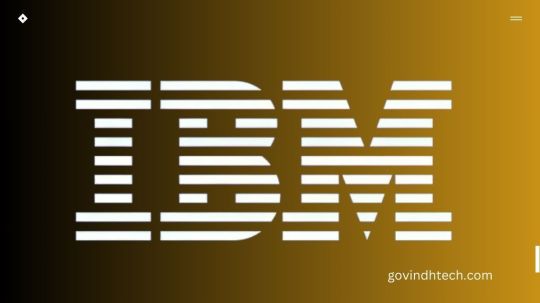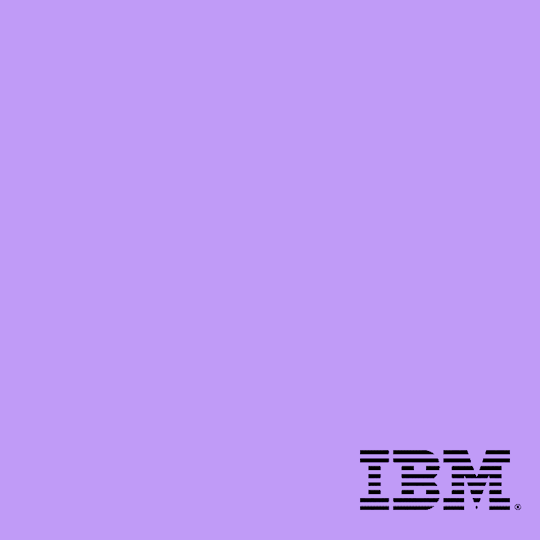#ibm cloud
Explore tagged Tumblr posts
Text

Modern organizations may improve client interactions, increase revenue, and streamline operations with the help of Microsoft Dynamics 365 CRM. Its integrated platform handles customer support, marketing, and sales interactions with ease. Microsoft Dynamics 365 CRM uses automation, analytics, and artificial intelligence (AI) to increase corporate agility, optimize processes, and boost customer interaction. This Flexible Solution encourages team cohesiveness throughout your company and supports data-driven decision-making for sustained success, spend money on Dynamics 365 CRM.
#customer relationship management#erp software#fusion5#corporate performance management#cpm tools#ibm cloud#crm systems#netsuite#enterprise architecture#erp system in new zealand#microsoft dynamics 365 crm
0 notes
Text
Utilizing IBM Cloud VPC images to maximize their potential

Maximizing Performance with IBM Cloud VPC Images
IBM Cloud VPC instances are created using images. Choose a stock, custom, or catalog image based on your needs. What are stock pics?
What are stock images?
The default operating system for IBM Cloud VPC environments is a stock image. It deploys virtual or bare metal servers of various architectures.
These images have all the configurations needed to provision a server and deploy instances quickly. IBM updates stock images, but users should apply the latest vendor fixes and packages when provisioning an instance.
IBM offers many alternatives. On IBM Cloud VPC, IBM support Red Hat Enterprise Linux, Windows Server, SUSE Linux Enterprise Server, Debian, Ubuntu, Rocky Linux, CentOS Stream, and Fedora.
IBM will follow each vendor’s end-of-support (EOS) dates for most of these images. IBM will assign stock photos three statuses based on their stage to manage their lifecycle:
Available
Deprecated
Obsolete
If an OS is supported by the vendor, IBM’s current stock image will always be “available”. Outdated versions will be marked “deprecated”. Stock photos with vendor-set OS expiration dates are marked “obsolete”.
Remember that you can launch instances using available and deprecated instances, but not obsolete stock images.
Stock photos may be deployed and used immediately for any purpose, which is a major benefit. Custom images can be made from stock photographs.
Instance deployment using stock pictures
1. Click Change image on the instance creation page’s image and profile section.
2. A side panel will display all stock photos for architecture selection:
3. Type the OS name into the filter on the Stock pictures tab, pick it, and click Save:
4. After closing the side panel, the UI should show the new stock image:
Describe custom images
Customers develop virtual servers using custom operating system images with their own specifications. Antivirus, databases, and other software can be added to custom images. You can generate a custom picture by leveraging an existing instance with a customized base stock image or by creating and importing it on-premises.
Custom image owners set the image status (available, deprecated, or obsolete), unlike IBM for stock photos.
End-of-support (EOS) photos are not instantly “deprecated” like stock photographs, but the same rules apply. Planning the lifecycle of your images will save your firm time and resources and help it innovate by adopting the newest OS versions.
Custom images let you preserve your settings and setups. Use a custom image to deploy more instances in the same area, control their lifespan, and export and import into another region to deploy instances there.
Custom image creation
1. Select Images and click Create on the VPC menu.
2. Name your custom image.
3. You can customize an instance image. Stop the instance before creating the custom image.
4. Select an instance’s boot volume to create a custom image. Like the previous step, halt the instance before creating the custom image.
5. You can import Cloud Object Storage images. You must save the picture in a COS bucket and specify the base operating system when importing.
6. Provide the picture file URL and base OS to import from COS.
7. Choose encryption.
8. Custom image lifecycle management is optional. You can set the deprecation date, obsolete date, or both in advance by date or days.
Custom image instance deployment
1. Click Change picture under picture and profile.
2. After choosing the architecture type, choose Custom images, select the custom image you need to deploy an instance, and click Save.
What are catalog images?
Catalog images are bespoke images you or an IBM partner add into a private or public catalog. Other cloud providers call them marketplace images. Each catalog image will include an IBM Cloud Catalog tile. Only virtual servers support catalog images; bare metal servers are not supported.
Enterprise accounts can exchange custom photos via private catalogs. Multiple accounts (or selected accounts) within the same enterprise can have product access managed. The only restriction is that encrypted images cannot be cataloged and must be “available”.
Image lifecycle management at the catalog level includes “available,” “deprecated,” and “obsolete” states. Set the following catalog statuses:
The Catalog lists “available” as “published/verified” in VPC.
“Deprecated” is the same in VPC and Catalog.
The Catalog lists VPC “obsolete” items as “archived”.
IBM Partners and ISVs can share IBM Catalog pictures using public catalogs. Partners and ISVs must undergo onboarding before publishing photographs publicly from the collection.
IBM partners can only accept free products today. In future project deliveries, they will be able to onboard charged images and get paid by IBM customers for consumption, exactly as other cloud providers in their markets.
Using catalog images to deploy instances
1. Select Change picture under picture and profile.
2. Select a catalog image from your account under the Catalog images tab.
3. Click Save and create instance.
Learn more
IBM offer several business images depending on your goals.
Stock images are best for quickly deploying instances. Custom images are best for replicating or moving setups to different regions or zones. Finally, a catalog picture is best for using the photographs of a trusted third-party seller or sharing them within your company.
Read more on Govindhtech.com
#technology#govindhtech#technews#news#ibm cloud#ibm#ibmcloudvpc#stock images#Catalog Images#Custom Images
0 notes
Text

USA 1993
117 notes
·
View notes
Text
Virtual spaces in a grid

Drawing about theme of virtual space. Such a grid. Which often you can see as a theme for wallpaper. If to surf net. So, it is a typical image, it is connected with aesthetic of retro wave. And everything that is similar, like 8 bit, virtual space, retro wave. And it is now a moment for me to create something like this, image with space made of grid. I was all the time impressed how other can do this.
And this is my drawing about the same theme. Two pictures. One is made in palette with parameters CGA RGB Color OFF, and second is made with palette from Nes 8 bit.

Let’s move to grid CGA. At first. We have here a space. With clouds and stars. It is simply space. Dreams in retro clouds. Flight amongst the clouds. Retro. And not to be lost here - there is a grid here. For navigation in this space. It is more simple space. You can test flight here. Or just walk. There is no gravity here.

And now let’s move to space Nes 8 bit. It is a filed. With chamomile or sunflowers. 8 bit flowers and grass. So here it is going a raining. Which is giving water to little flowers. It is already more made retro 8 bit space. It exists with more length in time. And it is updated with objects. So, here it is gravity. And already plants are growing. Clouds are making a rain. And you can have a walk into this 8 bit field.
Maybe to remember your country house memories. As you play 8 bit Nes videogames at the country house. For example. Or some another system. Watched VHS videotapes. Moment of nostalgia about 80s. 8 bit field is calling you to run here. And get yourself under the rain. And with a fun to run back to your house.
Grass is such green and so familiar, which you can see in the field. Chamomile and sunflowers also are well known for you. Even form of clouds, looks like, is taken from 8 bit games from cartridges. From some kind Adventure Island. But, well, no, not out of this game. Grass will grow. And maybe even birds will fly and a little house to appear.

Dima Link is making retro videogames, apps, a little of music, write stories, and some retro more.
WEBSITE: http://www.dimalink.tv-games.ru/home_eng.html ITCHIO: https://dimalink.itch.io/ GAMEJOLT: https://gamejolt.com/@DimaLink/games
BLOGGER: https://dimalinkeng.blogspot.com/
#8 bit#16 bit#nes#snes#megadrive#ibm pc#ms dos#retro#retro aesthetic#pixel art#virtual#virtual space#grid#cyber#techno#sunny#sunflower#chomomile#raining#clouds#field#country house#8 bit aesthetic#cga#16 colors#space#liminal spaces#surf#net#net art
8 notes
·
View notes
Text

3 notes
·
View notes
Text
IBM Turbonomic Cloud Cost Optimization
We are leading cloud cost optimization services company in the USA & India. Leverage our cloud cost optimization tool to automate workload management, reduce infrastructure costs, and enhance overall cloud performance.
1 note
·
View note
Text
Inteligencia Artificial: El Motor de la Nueva Era del Análisis de Datos
Introducción: De Datos Crudos a Decisiones Inteligentes Gracias a la IA Vivimos en una era de información sin precedentes. Las organizaciones generan y recopilan volúmenes masivos de datos cada segundo. Sin embargo, estos datos son solo potencial en bruto. El verdadero valor reside en la capacidad de analizarlos para extraer conocimientos, identificar patrones, predecir tendencias y, en última…
#Alteryx#Análisis de Datos#Analítica Aumentada#Analítica Predictiva#AutoML#Azure ML#BI#Big Data#Business Intelligence#Ciencia de Datos#Data Mining#Domo#Google#IA#IBM#IBM Watson#inteligencia artificial#Looker#machine learning#Microsoft#MicroStrategy#Oracle#Oracle Analytics#Palantir Technologies#Power BI#Qlik#RapidMiner#SAP#SAP Analytics Cloud#SAS Institute
0 notes
Text
Explore International Business Machines (IBM) stock price forecasts for 2025–2029, diving into financials, dividends, and competitive trends. #InternationalBusinessMachines #IBM #IBMstock #Stockpriceforecast #Dividendyield #Hybridcloud #AItechnology #Investmenttips #Techstocks #Stockmarketanalysis
#AI technology#Best time to buy IBM shares#Competitive Landscape#Dividend Yield#How to invest in IBM stock today#Hybrid cloud#IBM#IBM competitive analysis 2025#IBM dividend yield and buyback policy#IBM financial performance#IBM hybrid cloud and AI growth potential#IBM stock#IBM stock forecast and financial ratios#IBM stock price history and trends#IBM stock price prediction 2025–2029#International Business Machines#Investment#Investment Insights#Investment tips#Is IBM stock a good long-term investment#Should I buy IBM stock in 2025#Stock Forecast#Stock Insights#Stock market analysis#Stock Price Forecast#Tech stocks
0 notes
Text
SSH atau TELNET?
SSH (Secure Shell) memiliki keunggulan keamanan yang lebih baik dibandingkan Telnet. SSH juga lebih serbaguna dan dapat digunakan untuk mentransfer file secara aman.

Sisi Keamanan
SSH menyediakan koneksi yang aman dan terenkripsi antara klien dan server. SSH mendukung autentikasi, sehingga Anda perlu memberikan kata sandi atau kunci untuk mengakses komputer jarak jauh. SSH dapat melindungi identitas, kata sandi, dan data pengguna dari serangan pengintaian.
Fungsi Serbaguna
SSH dapat digunakan untuk mengakses dan mengelola perangkat dari jarak jauh melalui suatu program. SSH dapat digunakan untuk mentransfer file antara perangkat jarak jauh secara aman. SSH dapat menyalurkan protokol lain seperti FTP.
Perbedaan dengan Telnet
Telnet beroperasi dalam bentuk teks biasa, yang berarti bahwa semua data dikirimkan tanpa enkripsi. Telnet sangat rentan terhadap berbagai serangan keamanan, seperti serangan man-in-the-middle dan penyadapan. SSH adalah pengganti Telnet dan memiliki beberapa fitur yang disempurnakan juga.
0 notes
Text
#Remote IoT APIs#IoT Device Management#Google Cloud IoT Core#AWS IoT#Microsoft Azure IoT#ThingSpeak#Losant IoT#IBM Watson IoT#IoT Solutions 2025
0 notes
Text
Optimizing IBM DataPower's Cloud-Based Integration
W3 Partnership specializes in providing cloud-based solutions, middleware integration consulting and integration connection (iCaaS) customized to meet your specific requirements. With decades of experience, we offer innovative digital integration architecture services and hybrid integration platforms that enable companies to promote innovation, remove silos, and streamline operations.
IBM DataPower helps businesses meet their security and integration needs—enterprise-grade security, control, and comprehensive transport and data protocol support. IBM DataPower is a device that collects data. The IBM DataPower appliances are purpose-built, easy-to-convey arrangement gadgets that untangle, protect, and accelerate your XML and Web administration services while expanding your SOA framework.
Consulting for Integration
W3 Partnership consultants help firms connect systems and streamline processes by bringing years of experience in middleware integration solutions and application integration consultancy services. Our on-site development services are adaptable, scalable, and customized to match the demands of particular projects. We provide solutions with demonstrated expertise, whether you need help installing cloud-based apps, building up hybrid integration platforms, or hiring professionals to manage and coach your development teams. We guarantee that your integration projects are efficient, economical, and aligned with your corporate objectives by concentrating on integration connection as a service (iCaaS) and custom API integration services.
Cloud-Based Integration
Cloud-based integration is the foundation for connecting systems, data, and apps in today's digitally-first business environment. W3 Partnership's cloud-based integration services efficiently link on-premises systems, cloud apps, and third-party solutions to create a seamless digital environment. It is designed with agility, scalability, and security in mind, our solutions reduce IT complexity, enhance data accuracy, and enable real-time data exchange, empowering your teams to make faster, data-driven decisions.
W3 Partnership's approach to cloud-based integration leverages advanced integration platforms and API-led connectivity to help businesses integrate applications quickly and cost-effectively. Our cloud-based integration services make linking marketing tools, CRM systems, ERP platforms, and data analytics apps easier while maintaining data accessibility and integrity. We assist businesses in increasing productivity, enhancing customer experiences, and achieving operational agility by dismantling silos and facilitating real-time information flow.
Visit this blog for related insights: https://shorturl.at/Oe9zS
0 notes
Text

Use Australia's cutting-edge CPM tools to optimize your return on investment. Simplify financial planning, budgeting, and forecasting to boost precision and efficiency. To aid in decision-making, use real-time insights and analytics created especially for Australian businesses. Utilize state-of-the-art corporate performance management solutions that are intended to produce quantifiable outcomes to boost performance and unlock growth potential. Visit us now to know more about CPM Tools in Australia.
#customer relationship management#erp software#fusion5#cpm tools#ibm cloud#corporate performance management#crm systems#netsuite#enterprise architecture#CPM Tools in Australia
0 notes
Text
On-premises network and IBM Cloud VPC via oneVPN

It’s essential to create secure connections between networks and resources in order to guarantee data privacy and trustworthy access. But it gets difficult to keep up with all the connections we make since there are so many of them.
Fortunately, IBM’s VPN services, Client-to-Site VPN and Site-to-Site VPN, allow you to immediately optimize your VPN connections. To connect to your IBM Cloud and on-premises environments via a single Client-to-Site VPN connection, feel free to follow the procedures provided in this blog article. You can read more about these offerings here.
Figure 1 below shows a graphic representation of the use case. A single Client-to-Site VPN connection is used by end users to access to both the VSIs in their IBM Cloud VPC and the instances and databases in their on-premises environment:
Your IBM Cloud account must first deploy a Client-to-Site VPN server and gateway for this optimal design.
Prerequisites
An IBM Cloud account with a VPC and at least one VSI to verify VPN connections.
IAM rights, Security Groups, and ACLs needed to create VPN gateways and other resources.
On-premises peer device and Subnet CIDR data.
Your local laptop’s OpenVPN client will verify VPN connectivity.
Steps to set up both VPNs simultaneously
Create a Site-to-Site VPN first, then a Client-to-Site VPN. To connect VPNs, we’ll construct routes, authentication, and service-to-service authorisation after deployment. Finally, we’ll install OpenVPN on the laptop and test IBM Cloud and on-premises connectivity. Each step will be explained below.
Create the Site-to-Site VPN gateway
Before starting this phase, gather your on-premises Peer Gateway, Preshared Key, and IKE and IPsec policies.
Log in to IBM Cloud Catalog, search “VPN” and pick VPC VPN. Choose Site-to-site gateways and enter the gateway’s deployment location and other information. Choose route-based for the VPN tunnel.
Click the right-hand Create VPN gateway button. This connects your IBM Cloud to your on-premises data center via VPN. The IBM Cloud portal should show the gateway as active after creation. Right now, the connection is ready to transport IBM Cloud traffic to your on-premises system.
Create Site-to-Site VPN routes
After connecting to the VPN, we’ll design VPN routes to connect IBM Cloud VPC to your on-premises router. Create a VPN route in the VPC Routing Tables or use an existing one. Enter all needed fields. As an example:
Subnet destination: on-premises CIDR
Action: Deliver
Type of next hop: VPN connection
The VPN gateway: It is the newly created VPN .
VPN connection: Connection name supplied when creating VPN gateway.
Here are detailed instructions for designing and managing routes.
Important: After creating routes, attach VPC source subnets to the routing table.
You should now have a VPN with routing between your IBM Cloud VPC and on-premises environment. Figure 1 shows this flow in red.
Set up authentication and authorization
Before creating a Client-to-Site VPN, we must generate and store client and server certificates in IBM Cloud Secrets Manager. Generate and import certificates into Secrets Manager using these methods.
Establishing a service-to-service permission for the VPN Server and IBM Cloud Secrets Manager allows the VPN to access Secrets Manager certificates.
Client-to-Site VPN server creation
Enter IBM Cloud Catalog, search VPN, and pick VPC VPN. Client-to-site servers and the gateway deployment location (with all input parameters) are selected. This article uses a solo configuration. Select a CIDR range for the Client IPv4 address pool to assign IPs to client connections. In Subnets, fill out all required fields.
Configure Server and Client Authentications next. Select Server and Client Certificates from Secrets Manager from earlier procedures. Choose User ID and passcode for further security. Finally, configure Security Group rules to enable VPN traffic into the network.
To allow all traffic across the VPN interface and into the VPN tunnel, select Full tunnel in this form. The rest of the input options are optional. Click the right-hand Create VPN server button.
Create Client-to-Site VPN routes
Once the connection is operational on the Portal, you must construct two routes: one for VPC resources and one for remote/on-premises network access. Click here for route creation instructions. In the VPC diagram above, solid green and red dashed lines represent this flow.
Configure client profiles
Finally, download the VPN server client profile. Click Download client profile on the Clients tab of your IBM Cloud VPN server. Add Client certificate and Private Key to Client Profile.ovpn.
This article describes how to configure the client VPN environment to connect to a VPN server.
Config OpenVPN client and test connectivity
A VPN client is needed to access IBM Cloud and on-premises environments. Here you can download and install a VPN client for your operating system. Install OpenVPN and open the client to connect to the VPC using the profile established in the previous steps.
This VPN connection lets users connect to their IBM Cloud VPC and on-premises environment via IBM Cloud VPN. Visit the Clients tab on the VPN server in your IBM Cloud interface to verify client connections.
0 notes
Text

USA 1993
42 notes
·
View notes
Text
0 notes
Video
youtube
"Ragul Raj's Journey: From Arich Infotech Training to DXC Technologies! 🚀
#youtube#training and placements#jobsearch#job#mainframe training#information technology#mainframe#Java Training#online jobs#it jobs#jobseekers#MicrosoftCloud#ibm#corporate training#training#javatraining#cloudcomputing#cloud transformation
0 notes